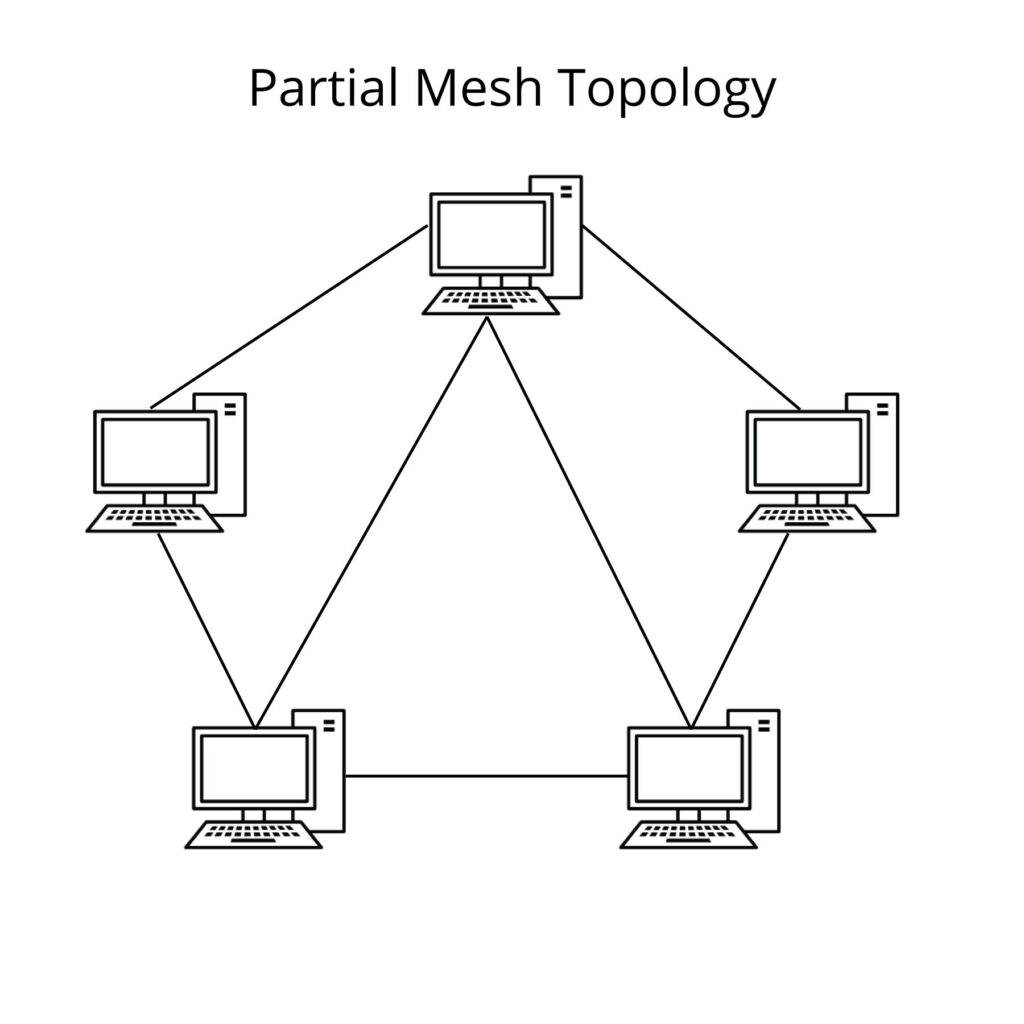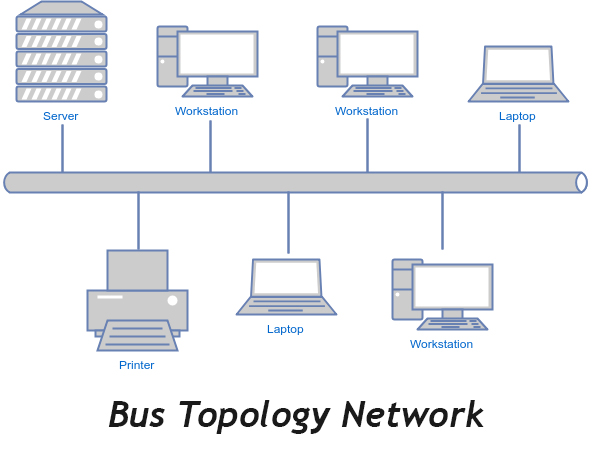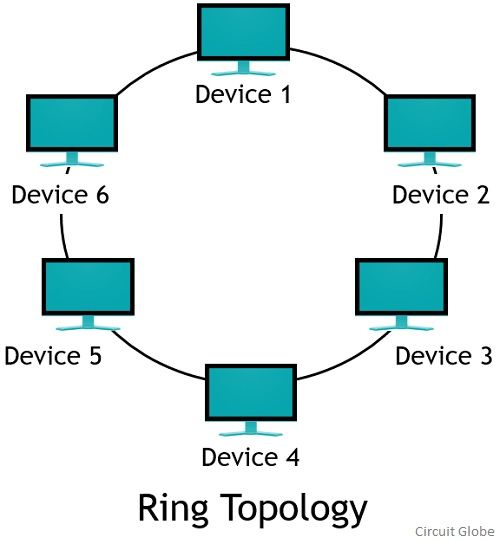what is network topology anyways? Network topology is just a word to describe the general structure of a network: how it's laid out and how nodes connect. (Node is a word that describes anything connected to a network, such as computers, printers, or reciprocators of the network.) When considering a network topology, some of the factors to take into account are: cost, transfer speed, & scalability. There are four main types in OCR Computer Science: — Star networks — Mesh networks — Bus networks — Ring networks
Star Networks
Star networks are a type of network topology that involves a central switch; all nodes connect to this main central switch.
 Advantages of a star network:
— If one node loses communication to the central switch, the rest of the network is unaffected.
— Data transfer is fast as each wire is connected to the hub and not shared with other computers
Disadvantages of a star network:
— Additional setup is required for this network topology as a central switch and network cables are required.
— The network can not be wireless.
— The network is centralised to the central switch; so if the central switch goes down, so does the rest of the network.
Advantages of a star network:
— If one node loses communication to the central switch, the rest of the network is unaffected.
— Data transfer is fast as each wire is connected to the hub and not shared with other computers
Disadvantages of a star network:
— Additional setup is required for this network topology as a central switch and network cables are required.
— The network can not be wireless.
— The network is centralised to the central switch; so if the central switch goes down, so does the rest of the network.
Mesh Networks
Mesh networks have nodes that are connected to each other instead of being connected to a central node such as a central switch.
There are two main types of Mesh networks in OCR GCSE: Partially connected & Fully connected mesh networks.
Each node is capable of sending and receiving data from other nodes.

 Advantages of a full mesh network:
— No single point of failure
— The fastest path of connection is found and used
— No node is isolated
— Data is likely to transfer properly because multiple nodes can provide the same connection
Disadvantages of a full mesh network:
— If one node is down it can affect the speed of others
— If wired it is often more expensive to setup than alternatives
— Network maintanence and administration is often more difficult than alternatives; a larger amount is also needed
Advantages of a partially connected mesh network:
— No single point of failure
— Network administration and maintanence is less needed than in a fully connected mesh network
— No node is isolated
— Data is likely to transfer properly because multiple nodes can provide the same connection
Disadvantages of a partially connected mesh network:
— If one node goes down it can affect the speed of others
— Not all nodes are connected to each other so data may not transfer at rates as fast as a partially connected mesh network
Advantages of a full mesh network:
— No single point of failure
— The fastest path of connection is found and used
— No node is isolated
— Data is likely to transfer properly because multiple nodes can provide the same connection
Disadvantages of a full mesh network:
— If one node is down it can affect the speed of others
— If wired it is often more expensive to setup than alternatives
— Network maintanence and administration is often more difficult than alternatives; a larger amount is also needed
Advantages of a partially connected mesh network:
— No single point of failure
— Network administration and maintanence is less needed than in a fully connected mesh network
— No node is isolated
— Data is likely to transfer properly because multiple nodes can provide the same connection
Disadvantages of a partially connected mesh network:
— If one node goes down it can affect the speed of others
— Not all nodes are connected to each other so data may not transfer at rates as fast as a partially connected mesh network
Bus Networks
Bus networks are a network topology that involves having several nodes connect using one main cable.
All nodes are attatched to this cable and use it to send/recieve data.
 Advantages of a bus network:
— Very easy to setup because it only uses one cable
— Low cost to build in small networks
— The simple layout is easy to understand
Disadvantages of a bus network:
— Centralised to the main cable, if the main cable breaks then the whole network stops working
— The more nodes there are connected, the more collisions the network has (this slows the network down)
— Quickly becomes slow and unreliable for large networks
Advantages of a bus network:
— Very easy to setup because it only uses one cable
— Low cost to build in small networks
— The simple layout is easy to understand
Disadvantages of a bus network:
— Centralised to the main cable, if the main cable breaks then the whole network stops working
— The more nodes there are connected, the more collisions the network has (this slows the network down)
— Quickly becomes slow and unreliable for large networks
Ring Networks
Ring networks are a network topology that involves all devices being connected in series (this is usually represented as a circle.)
The data passes from once device to another until it eventually reaches the computer it was intended for.
They are often used in smaller networks that are unlikely to be scaled upwards.
 Advantages of a ring network:
— Zero data collision due to the cyclical structure
— Simple to setup since the arrangement is very straightforward
Disadvantages of a ring network:
— Has to go through every node which is much slower than other network topologies
— Very hard to troubleshoot, maintain, and administrate
— The network must be closed to add more devices
Advantages of a ring network:
— Zero data collision due to the cyclical structure
— Simple to setup since the arrangement is very straightforward
Disadvantages of a ring network:
— Has to go through every node which is much slower than other network topologies
— Very hard to troubleshoot, maintain, and administrate
— The network must be closed to add more devices